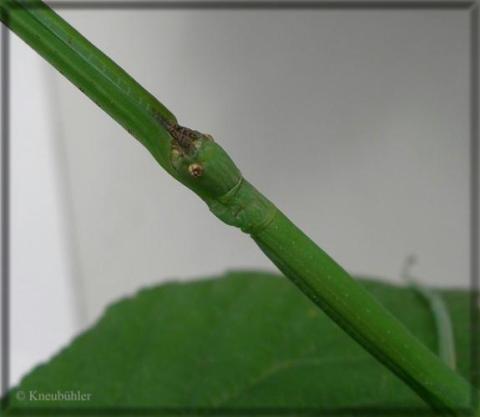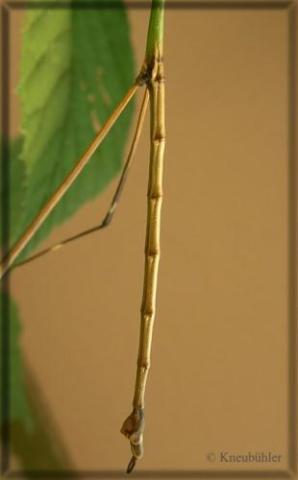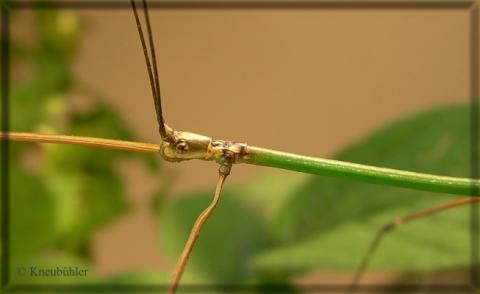
Genus
Species
Stock
CLP
407
PSG
346
Culture status
In culture
Foodplants
Cherry Laurel (Prunus laurocerasus)
Bramble (Rubus spp.)
Paulina sp.
Hamelia patens
Gonzalungia panamensis
Aristolochia veracruzana
Breeding notes
(by Bruno Kneubuehler)
General Informations
- 2006 - first successful culture by Jan Meerman (Belize, 2006) and Bruno Kneubühler (2006)
- 2006 - I have distributed this species as Paracalynda picta picta to other breeders
- 2012 - recently it became evident that this speices is actually Paracalynda utilaensis, and not Paracalynda picta picta.
Here you find more detailed informations on this:
HENNEMANN, F.H. & CONLE, O.V. (2012): Studies on Neotropical Phasmatodea XIII: the genus Paracalynda Zompro, 2001 with notes on Eusermyleformia Bradler, 2009 (Insecta: Phasmatodea: Diapheromerinae: Diapheromerini).
► Journal of Orthoptera Research, 21(1): 57-64.
_________________
Origin
- Green Hills, Cayo District, Belize
_________________
Females
- thin and fragile lookig phasmids, they even look like nymphs when being already adult
- body length is about 11 cm (the orginal specimens were 11,5 cm
- wingless
- antennae longer than the forelegs
_________________
Males
- thin, about 9 cm long
- wingless
- thorax is green, the rest of the body is brown with some light markings
- antennae are longer than the forelegs
_________________
Eggs
- smooth, shiny, translucent and lentils-like shaped
- 3mm long, 2 mm wide
- in the beginning the eggs are light brown in colour
- as the embryo is close to hatching, the eggs turn green
_________________
Food Plants
- they easily accepted cherry laurel (Prunus laurocerasus) as food plant, nymphs as well as adults
- bramble has also been accepted, though a bit reluctantly
- out in the wild of Belize, Piper amalgo seems to be their natural food plant. Further plants which have been accepted in Belize are Paulina sp. (Sapindaceae), Hamelia patens (Rubiaceae), Gonzalungia panamensis(Rubiaceae), Aristolochia veracruzana (Aristolochiaceae) (Jan Meerman, pers. comm.)
_________________
Breeding Notes
- incubation on damp sand, with springtails to inhibit mould growth
- nymphs will hatch after 2-3 months
- keep the nymphs in a well ventilated cage, with wet paper towel on the bottom
- males will be adult after about 3,5 months, females after 4 months
- females start to lay eggs about 2 weeks after their final moult
- they just let the eggs drop to the ground





















